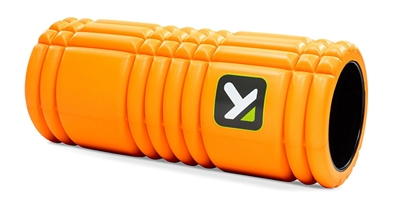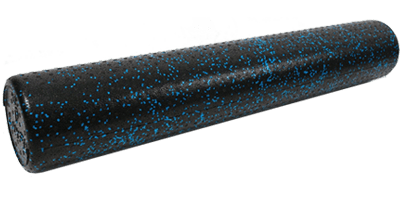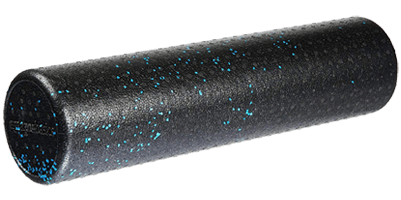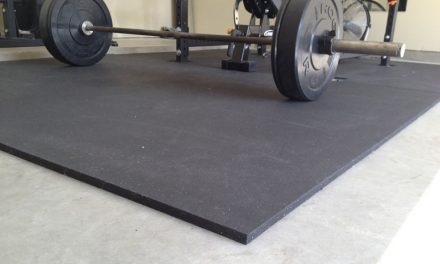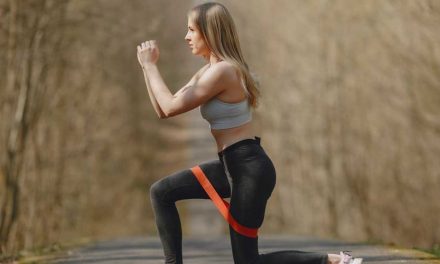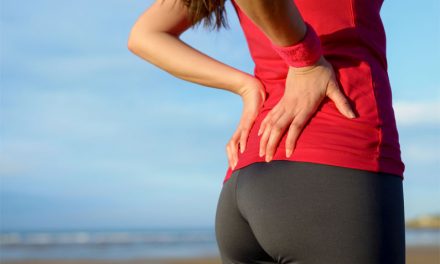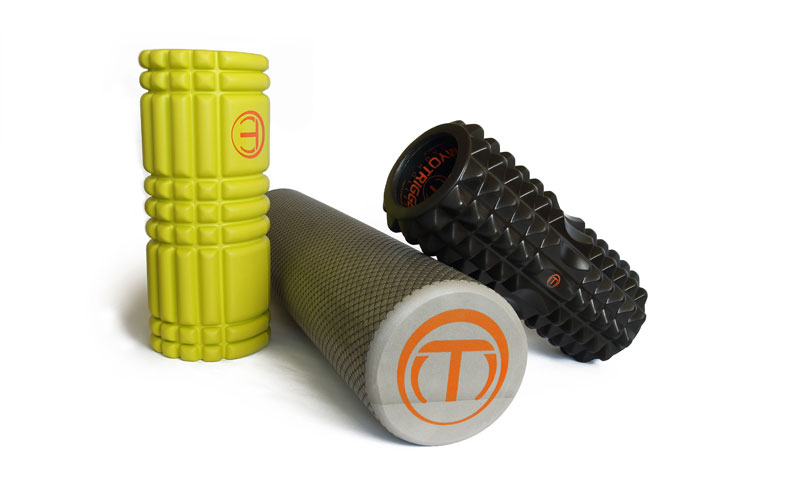
Foam Roller Benefits
Table of Contents
Over the past decade, I’ve noticed more and more people starting to use foam rollers.
Coaches, Physical Therapists, and athletes alike have been benefiting from them which may explain why it’s probably transitioned to the public.
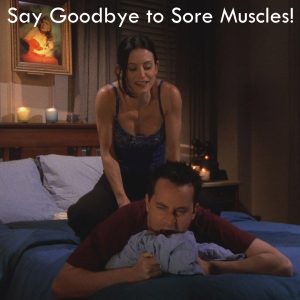 If you use foam rollers, then you understand the tremendous benefits associated with it…
If you use foam rollers, then you understand the tremendous benefits associated with it…
…along with the pain.
If you’ve never used it, it can get pretty uncomfortable at times and in some cases a little painful.
Think of it as a deep tissue massage — from Monica Geller.
Once you get used to it, the pain is manageable and the benefits are noticeable.
Through all of the trials and rolls, we’ve compiled a list of recommended rollers for you.
Recommended Rollers
TriggerPoint GRID
The TriggerPoint GRID is a 13 inch roller with a patented grid like design that is perfect for reaching those difficult locations.
This is without a doubt the best roller for me which is why I recommend it.
The hard, hollow core is incredibly durable and the padding is made from an EVA foam that is firm enough to make your muscles hurt so good.
Its short 13 inch length and 5 inch diameter makes it perfect for travel. It’s also easier to target all the major parts you need to hit.
There are different lengths and densitites but I find the GRID best suited for most users.
A lightweight, high density foam roller that comes in 4 different sizes.
Very effective and durable so that it maintains its shape.
An affordable and lasting foam roller from the Amazon house brand, AmazonBasics, is a basic foam roller that comes in a 12, 18, 24, and 36 inch length.
It’s made of a high density expanded polypropylene that makes it extremely durable and solid for the deep muscle massage.
Target your sore muscles post and pre workouts. Improve your mobility and roll out the knots.
A speckled blue design, High Density foam roller. Also comes in 4 different sizes and provides everything you need in a foam roller.
The LuxFit Foam Roller is an excellent tool to help improve your mobility.
With a 6 inch diameter, you’ll be able to use it to roll out the knots before every workout.
Made with molded polypropylene, it has 2 lbs per cubic foot density so you can use this knowing that it will withstand a tremendous amount of use.
It also comes with a full 3 year warranty!
“I roll daily, and my favorite by far is the TriggerPoint. It’s just the right density to be effective without bruising. A lot of rollers are too hard and will bruise rather than release (but if you like something on the denser side, TriggerPoint has an option for that, too). It’s the perfect size that allows you to target all major parts of the body, while being compact enough to travel with. It won’t dent or lose its shape, therefore maintaining its effectiveness for a number of years.”
Foam Roller Benefits
You already know the reason for stretching. Compare rolling to stretching with added benefits.
Most notably is the improvement on mobility.
Mobility is a huge factor when performing certain exercises.
Strength is great to have but it can only take you so far, especially with certain exercises and lifting routines.
If you don’t have mobility and proper form, you simply won’t be able to lift as efficiently.
It also helps reduce muscle pain if you do aggressive exercises.
One study shows that it noticeably reduces sore muscles and increases range of motion.
Another benefit to foam rolling is Self-Myofascial Release although there are some skeptics as to its effectiveness to the fascial tissue.
But despite the ongoing myofascial debate, Physical therapists, trainers, coaches, and other athletes continue to incorporate foam rollers into their sessions.
And they certainly agree that it has a proven effect or improvement on your movement and overall mobility.
Types of Foam Rollers
To start things off, let’s look at the various choices of foam rollers. They come in different lengths, textures, and densities. So, let’s go over a few of the main choices you have:
Textures
Foam rollers come with different surface textures.
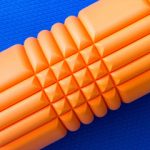 • Grid Pattern – To my knowledge, the grid pattern is a patented design by TriggerPoint. Its unique “grid” like pattern is supposed to replicate the hands of a massager. Personally, I don’t really feel “hands” but the grid pattern, however, does an excellent job of penetrating. Another great aspect is that it’s not uncomfortable or painful as the rollers with bumps/nodules. In my humble opinion, this roller is probably the best and most effective.
• Grid Pattern – To my knowledge, the grid pattern is a patented design by TriggerPoint. Its unique “grid” like pattern is supposed to replicate the hands of a massager. Personally, I don’t really feel “hands” but the grid pattern, however, does an excellent job of penetrating. Another great aspect is that it’s not uncomfortable or painful as the rollers with bumps/nodules. In my humble opinion, this roller is probably the best and most effective.
 • Deep Tissue/Bump Pattern – You have to be an experienced user for this one. These can get pretty painful depending on the design but penetrate the tight areas extremely well. The patterns can vary depending on the manufacturer. Some have large, protruding nodules that hit the knots really well. Then there’s those that have the flatter nodules and some that have a combination of smooth and ridges. But as I already mentioned, you really have to be an advanced user for this particular roller.
• Deep Tissue/Bump Pattern – You have to be an experienced user for this one. These can get pretty painful depending on the design but penetrate the tight areas extremely well. The patterns can vary depending on the manufacturer. Some have large, protruding nodules that hit the knots really well. Then there’s those that have the flatter nodules and some that have a combination of smooth and ridges. But as I already mentioned, you really have to be an advanced user for this particular roller.
• Smooth – This is your standard roller and probably the most affordable of the group. The roller has a smooth surface that does an efficient job of loosening up the muscles.
Density
There’s different density for different levels of users. Some need the hard roller to really dig into the knots but others may just need a softer, less-intense massage maybe due to injuries.
• Soft – Used for those who are more sensitive. Easier on the muscles and doesn’t feel like your rolling on concrete.
• Hard-core – For those who want or need a more deeper massage. These can be painful. Just keep that in mind, if you elect to go with one of these.
• Medium – This is pretty self-explanatory. These are in between but still provide a firmness that effectively targets those knots.
Size
Most foam rollers come in a diameter that’s around 5 to 6 inches. This is more than perfect for rolling out the large muscle groups.
Rollers come in various lengths as well.
• 6-12 inches – These are usually used for smaller muscles such as your arms or calves.
• 18 inches – You can use these for your legs, arms, and other parts of your body.
• 36 inches – Long rollers are used for your entire body. You can roll your legs, arms, back, and anywhere else that requires a roll out.
If you’re not sure which one to get, go with a 36 inch high density roller. They are typically made to last and if you are consistent, you’ll eventually work your way up to a high density roller anyway.
Other Types of Myofascial Release Tools
Foam rollers aren’t the only tools available. There are a surprising number of options for you in case you’re not comfortable with foam rollers.
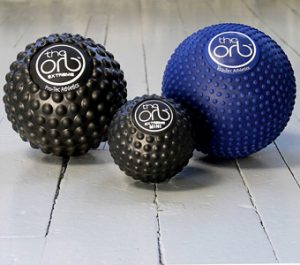 Massage Balls – These balls, AKA Trigger Balls, are a great alternative to foam rollers and in many cases preferred.
Massage Balls – These balls, AKA Trigger Balls, are a great alternative to foam rollers and in many cases preferred.
Not only can a ball treat more difficult areas, it’s more concentrated due to its smaller surface area which makes it more effective.
They come in various surface textures and densities.
You don’t necessarily need to use Massage Balls. You have the option to use tennis balls, lacrosse balls, or any other balls that has a similar density.
The only negative aspect of the ball is that it may take a bit longer.
Massage Stick – These are another great option. Think of it as a rolling pin. The handles are on each end with a rolling center and like the other tools, it also comes in various textures and density.
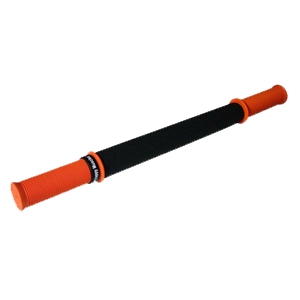 Some of these sticks are flexible and come in different lengths.
Some of these sticks are flexible and come in different lengths.
I prefer using sticks for my back and neck, however, when it comes to the rest of my body, I simply prefer foam rollers.
There are other “strange” designs that classify themselves as massage rollers.
There isn’t much information on them and I, personally, haven’t used them so I can’t really provide you with honest feedback.
But just by looking at their design, I can’t really see how beneficial they can be over the other tools. You won’t be able to apply the amount of pressure needed for proper myofascial release.
You can check product reviews from retail sites like Amazon to see how effective other users find them to be.
Whatever you decide, I would highly suggest you get a foam roller. Couple that with a ball or stick but a foam roller will be your main tool.
When you use it regularly, you’ll find just how effective they can be for pre and post workouts…
…and you’ll also witness improvements in your range of motion.

